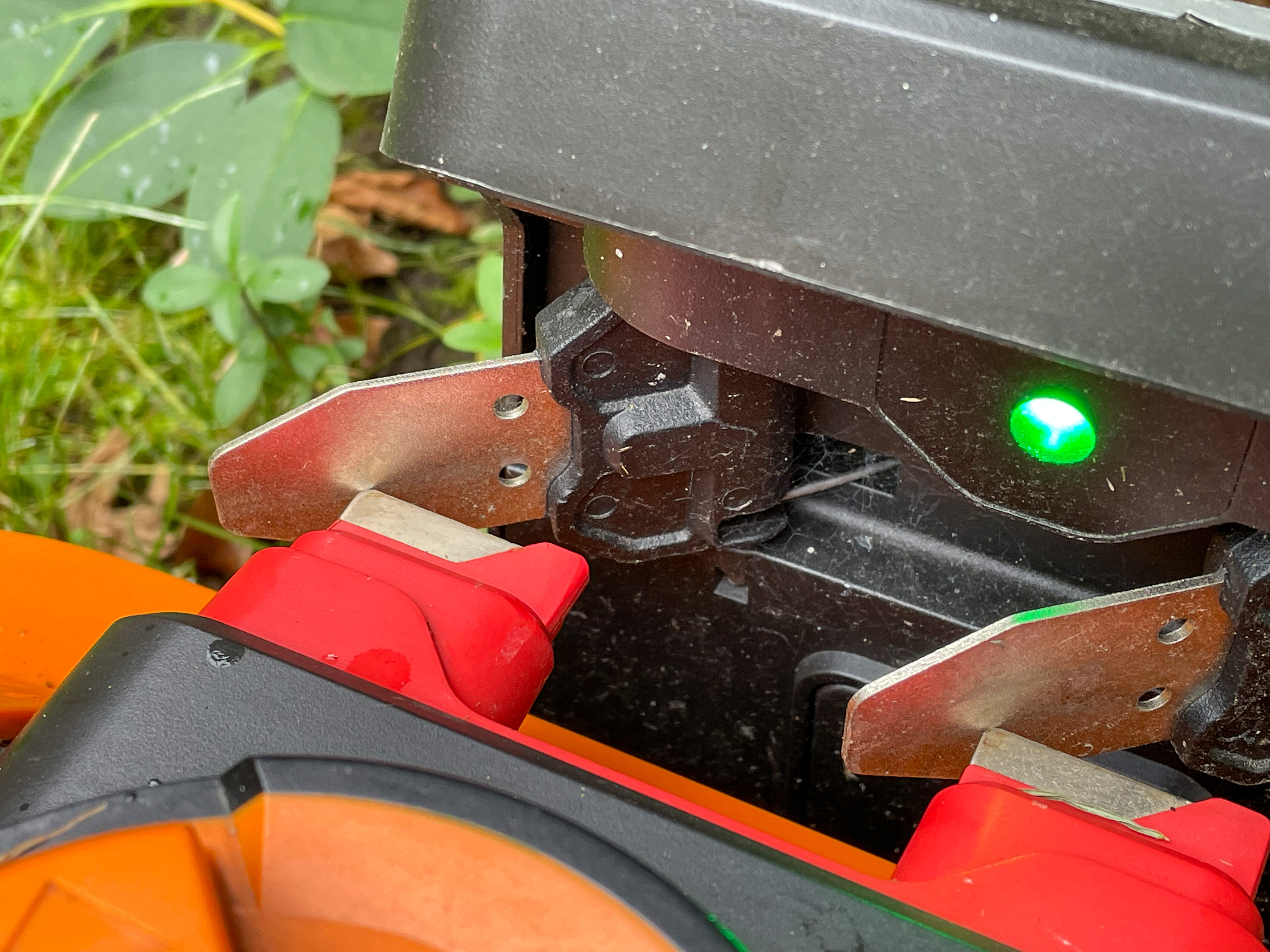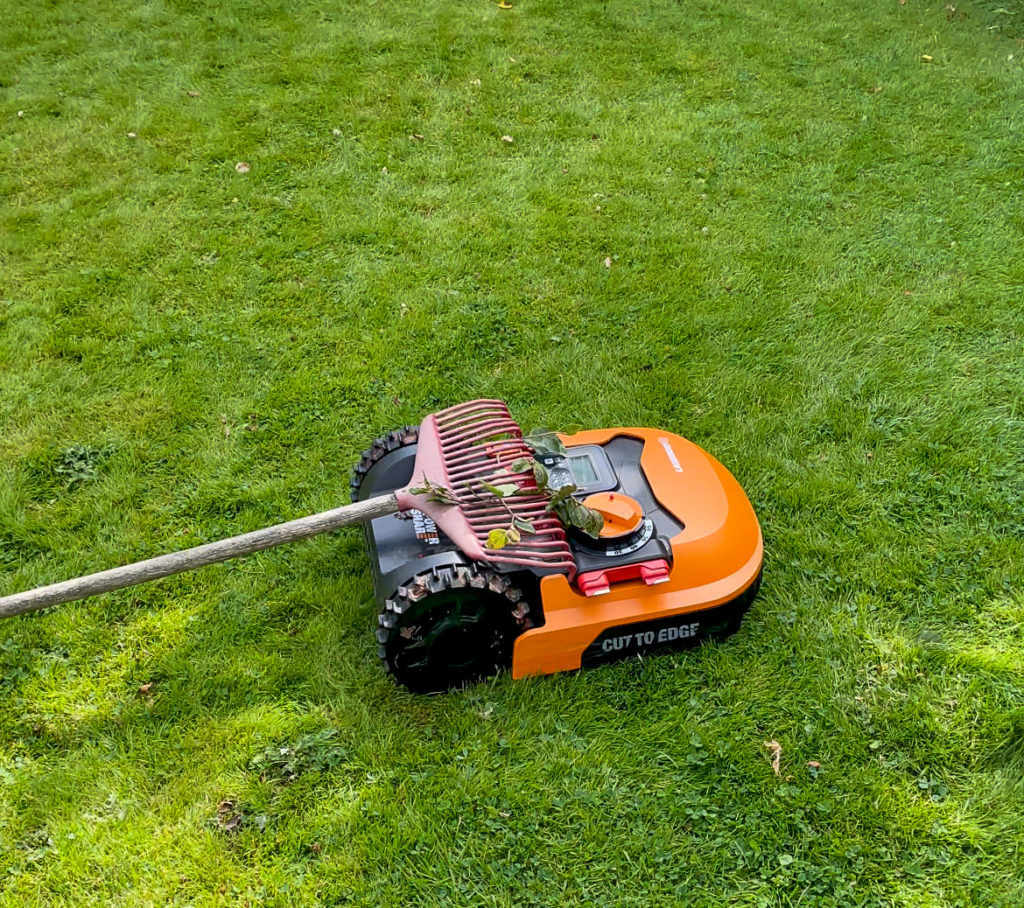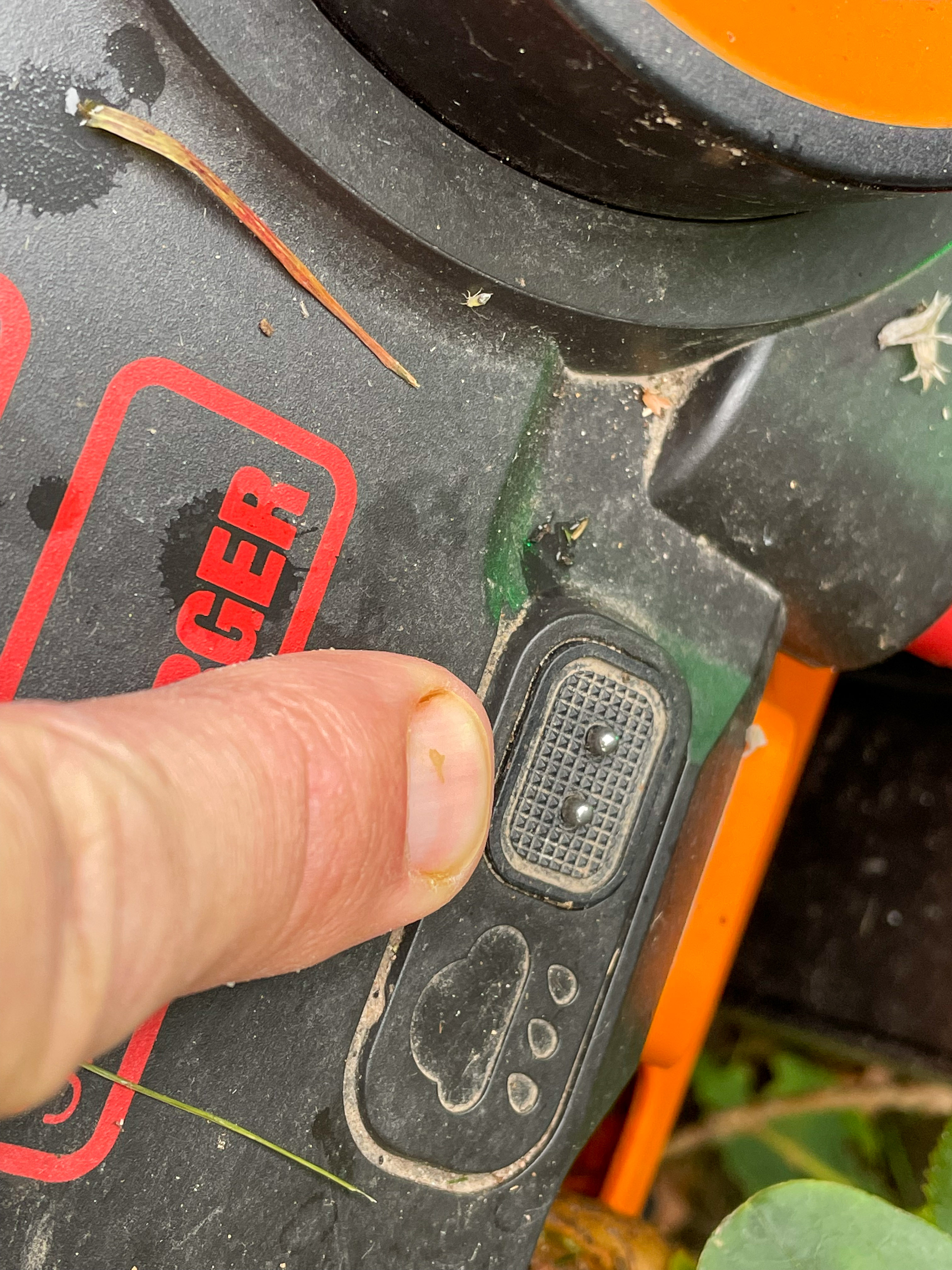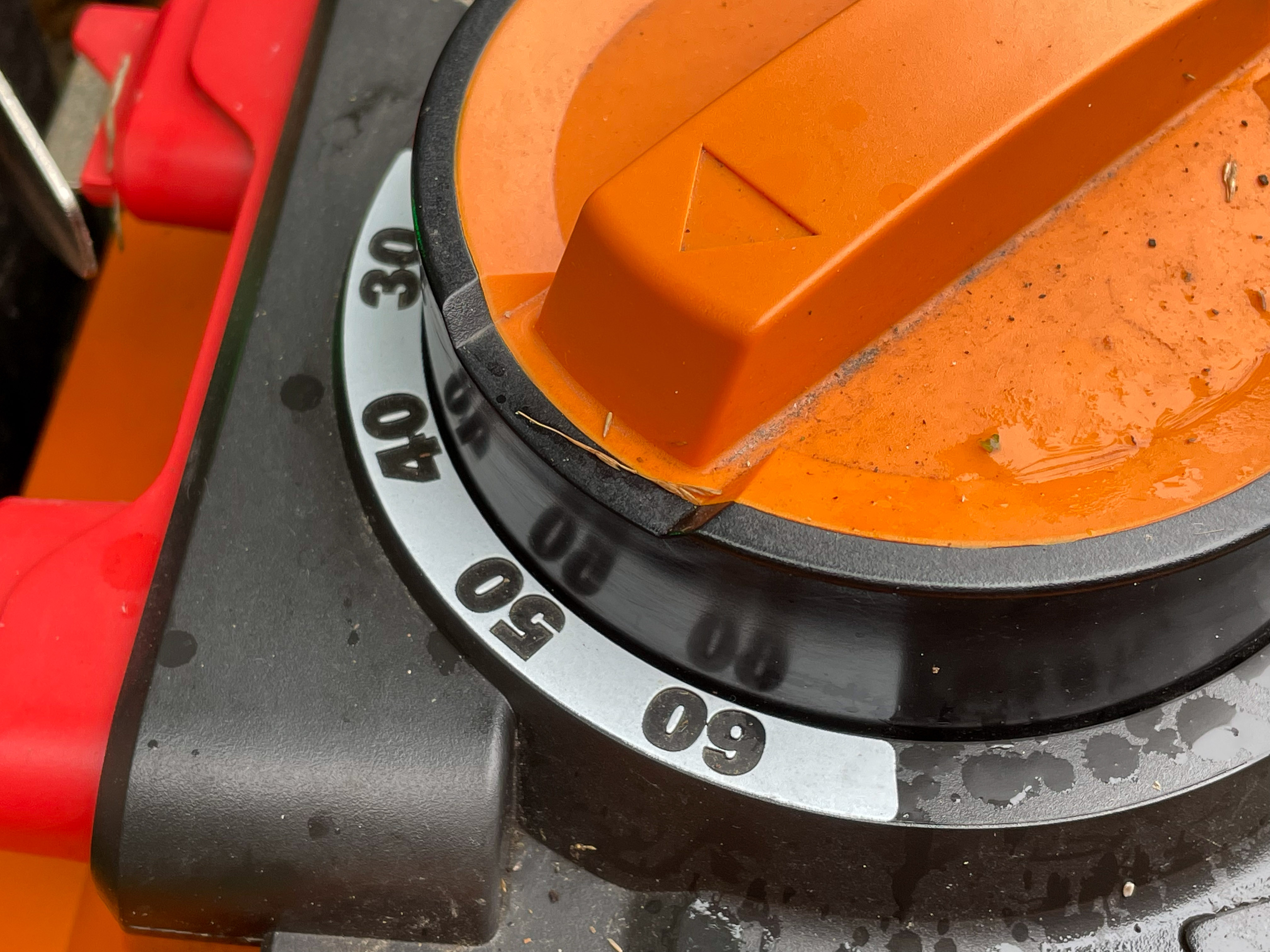Price
The Landroid M700 will set you back around 750 EUR, and hence it is one of the less expensive lawn mover robots available. You should however be aware that it comes without GPS tracking, which is an additional 200 EUR approximately. It is sold as a separate module you plug into the Landroid. You may not need it if your WIFI covers your entire lawn and if you don’t want to be able to track your Landroid, if stolen.
How it works
The Landroid needs you to install a boundary cable that defines the area in which the Landroid is to work. It is very important that you follow the installation instructions and give sufficient room between the cable and objects, as the Landroid follows the cable when it returns home to the base.

Compared to more expensive robots that have a so called guiding cable, which is a separate cable guiding the robot back to the base, the Landroid finds it way back to the base by searching for the boundary cable and following this counterclockwise until it is at the base. Any object along the boundary cable that stops the Landroid will be a show stopper, as the Landroid logically follows the boundary cable to find home.

It is also important that the lawn is free from any obstacles like fallen down branches, apples and tools from the shed, otherwise it will impair the operation of the Landroid. This was a little new to me, it is just like having a toddler where you keep objects out of reach to avoid problems…

The philosophy
Maybe a big word to use about a lawn mover, but it does operate somewhat differently from the Husquarna that I also have had the pleasure to test:
First, the Landroid has only one nose wheel, and this makes it very vulnerable to holes in the lawn. I had to fix several holes that I did not know I had before the Landroid would operate without interruptions. So you may want to get a lawn mover robot with 2 nose wheels if you plan to use it in less-than-perfect lawns.
Second, the Landroid only cuts 1/2 the width of the body. You can see here in the image below that the black area is where the crass is cut (my fingers show the cut area), behind the orange area there is nothing going on! So the Landroid needs to do a lot of back and forth in order to cut the lawn, as the blade is rather small. My guess is that the advantage is that the motor is less a strain on the battery and hence the Landroid can go for much longer stints than had it needed to power the motor to drive a larger blade. And it brutally drives the battery down to 10% before returning to base – other more conservative robots do that at 30%. And the battery can be used in other power tools from Worx and the other way around. So if you have several tools from Worx, you can share battery “pool” with the Landroid.

Third, the designers at Worx have prioritized that the robot is not to work when it rains! I have always been told that cutting the grass in rain is a waste of time, as the grass just bends and is not cut. But the much more expensive Husquarna I have tested did not have this ability.
The Landroid comes with sensors to detect rain, and if it is working, it returns to base, and if it is about to start, you can set up how long time it should delay its work, once the rain has stopped.

In contrast to the rain sensor, the cutting height cannot be controlled via an app as some of the more expensive robots offer. On the Landroid the height is controlled by a large turning knob on top of the body that determines the cutting height in mm’s. It feels a bit primitive, but when I think about how few times I have changed the cutting height, this seems to be a good place to lower the ambitions.

Operation
The Landroid is rather quiet. You can hear it working, but it is certainly not bad at all. Actually, it has several times bumped into me, as I was so absorbed in garden work that I did not hear it approaching.
The name M700 indicates that it can handle a lawn up to 700 square meters – mine is a bit smaller than that, and the Landroid seems rather relaxed maintaining the back yard of my house. In order to also handle the very small front yard that I have, I would need to install a second boundary cable, and move the robot. The front yard is simply too small for that, so my trusty old petrol driven lawn mover is still with me, and we cut the front yard in approx. 5 minutes. Notice also that the Landroid does not do corners very well, nor the area just outside the boundary wire (remember: you need some safety margin) so the good old petrol driven one also helps me out here.
The Landroid drive is pretty powerful. The two large rear wheels and a very small front wheel gives it lots of traction and it happily pushes smaller chairs around on the patio. It also detects non-movable objects such as a wall and makes recovery moves to get on with the job. In few cases have I seen the Landroid trapped, but that has been when the arms on the right hand side of the body have been caught in a branch or two, otherwise the Landroid does an pretty good job of pulling itself out of problems. But mind you that it does not like lack of space between the boundary cable and solid objects. And if holes in the lawn catches the tiny front wheel, then the Landroid gets stuck.
In terms of configuration I have simply asked the Landroid to generate a standard scheme, and made a few modifications on top of that. That works fine. You can see here in the display below that the Landroid is charging (43%) and that the schedule covers all days of the week – if no black box behind the letter of the day, then the Landroid has a day off (I’m a tough employer and it has duties all 7 days a week, but starts later in the day Saturday and Sunday).

You protect the Landroid settings with a passcode, but I am not sure how effective that is when it comes to theft – in that case you need to buy the GPS module to find your Landroid again.
The Landroid will make lines in the grass when cutting. In the image below, the morning dew clearly shows where the Landroid has been, but that quickly disappears and in general the lawn appears very neat and tidy when the Landroid takes care of it.
What is worse is that the Landroid works along the boundary cable so much that it eventually makes small tracks in the grass… Even if you ask the Landroid not to cut along the boundary wire, the Landroid will make tracks in the grass. Here I really miss the guiding cable from more expensive models…

Conclusion
What I like:
- Price
- Battery life / stint duration
- Quiet operation
- Easy setup
- Good traction and trap recovery
- Battery share with other Worx products
What I did not like:
- Leaves tracks along the boundary cable
- Does not handle corners well, nor the outside if the perimeter cable
- Only one nose wheel – vulnerable to holes in the lawn
- No GPS tracking (additional investment)
- Vulnerable to boundary cable blunders
- App does not work then WiFi coverage is missing / weak
